2.1 Measurement Precision
Workshop: “Handling Uncertainty in your Data”
What is (Measurement) Precision?
Interest Group: Open and Reproducible Research (IGOR)
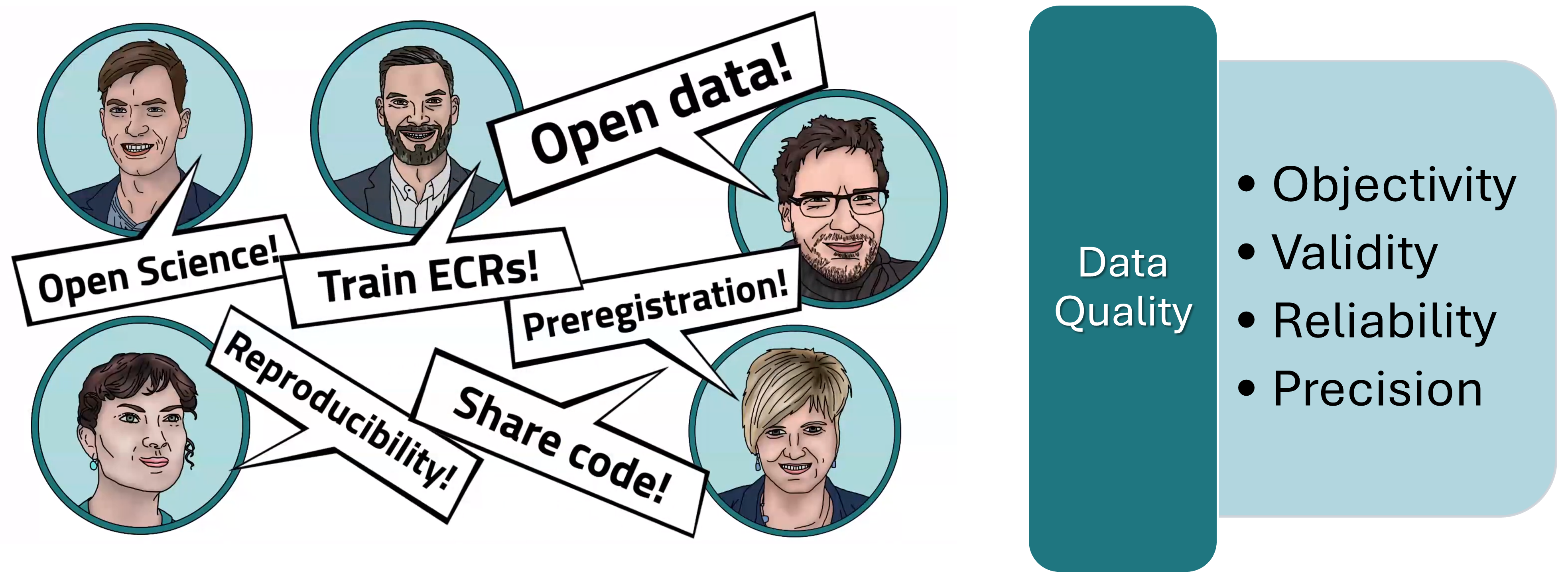
Part of the German Reproducibility Network:
https://www.youtube.com/watch?v=sQFmB_EY1PQ
Group-level Precision
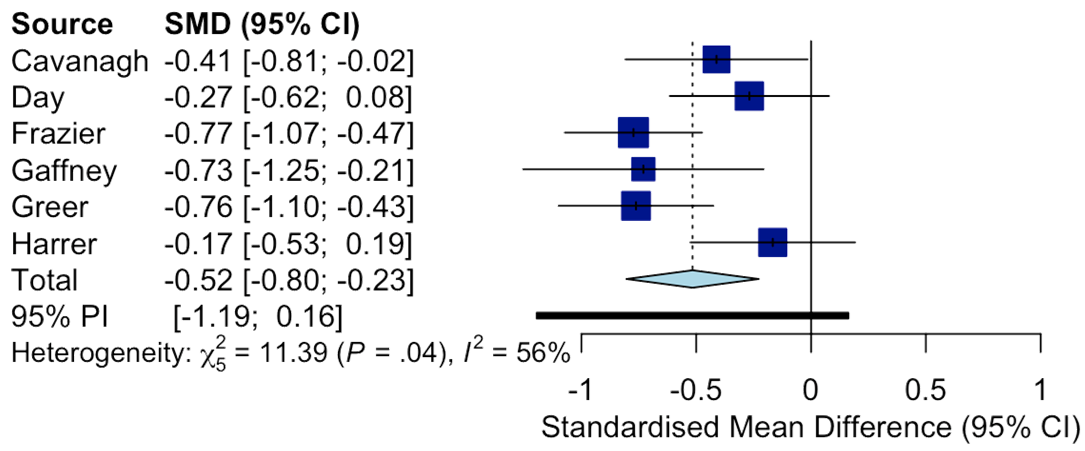
https://bookdown.org/MathiasHarrer/Doing_Meta_Analysis_in_R/forest.html#forest-R
→ Effects in relation to their group-level precision
Group-level Precision 2
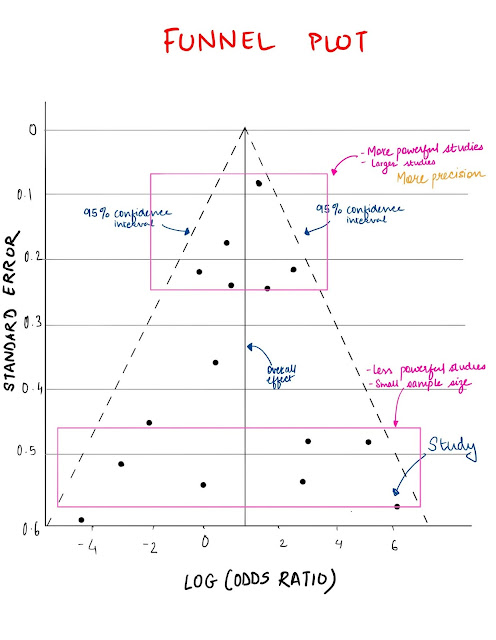
https://www.medicowesome.com/2020/04/funnel-plot.html
→ Effects in relation to their group-level precision
What is Precision?
- Precision is indicated by errorbars / confidence intervals
Subject-Level Precision
Is there a meaningful correlation?
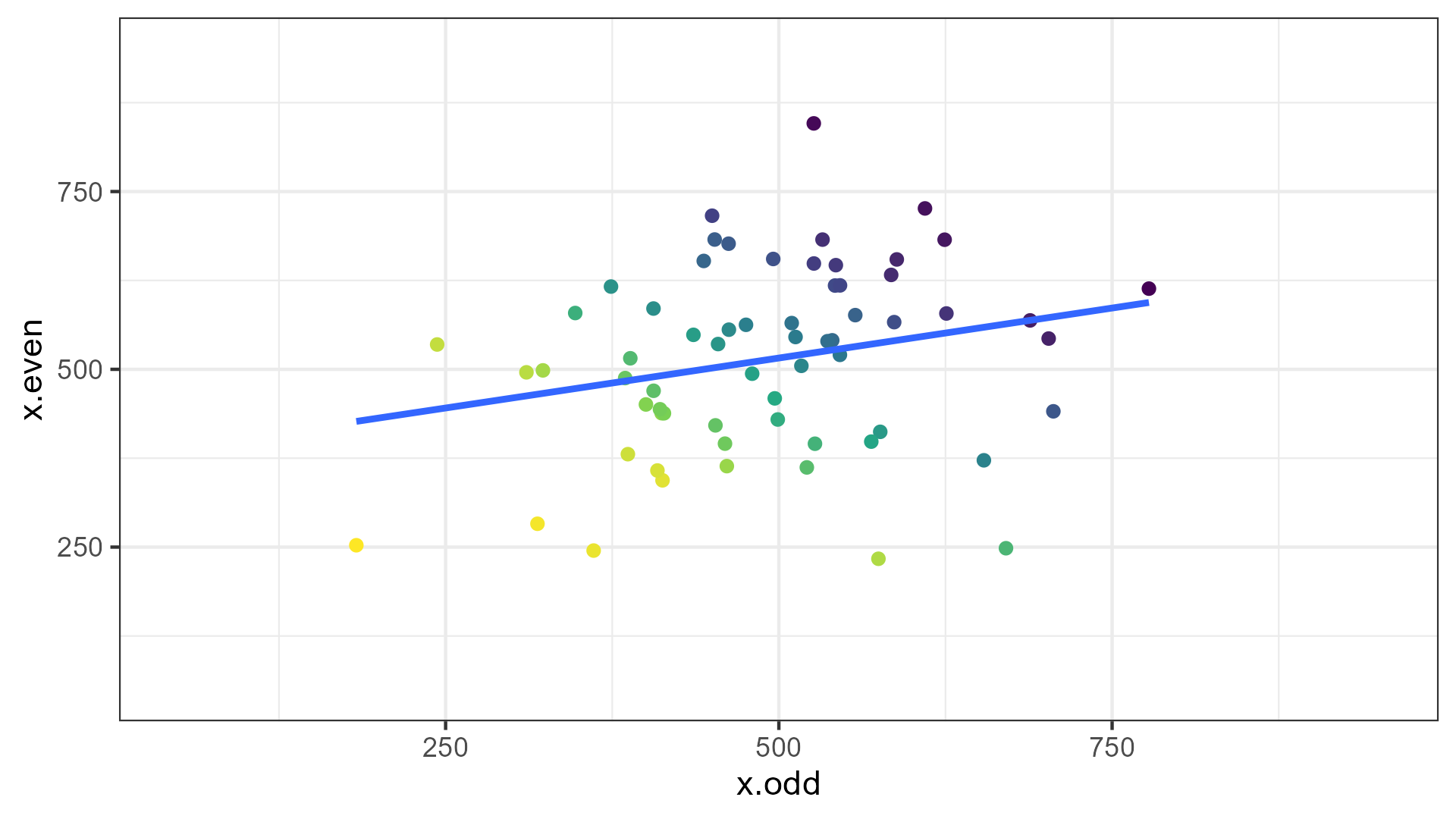
Subject-Level Precision 2
Is there a meaningful correlation?
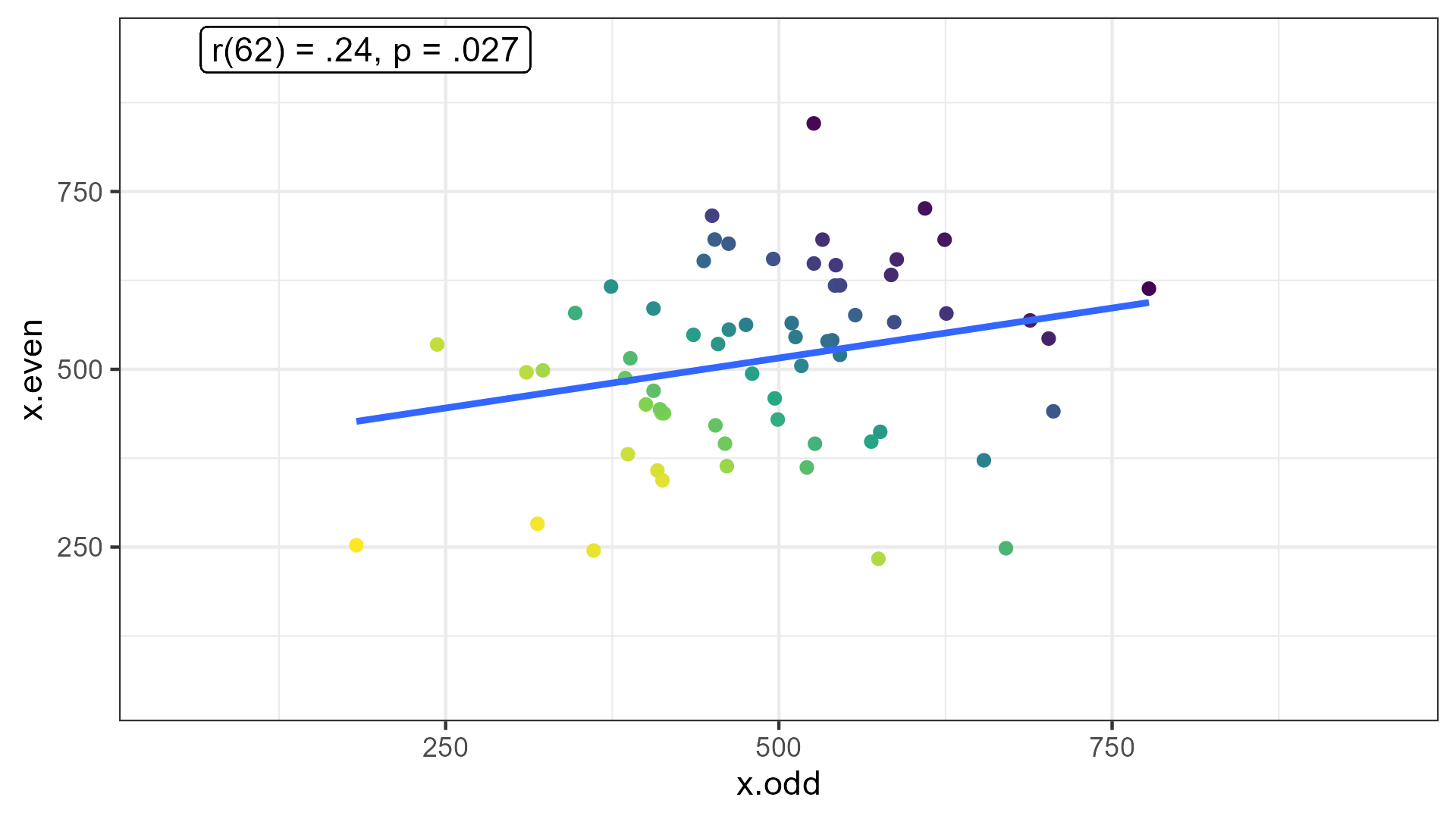
Subject-Level Precision 3
Is there a meaningful correlation?
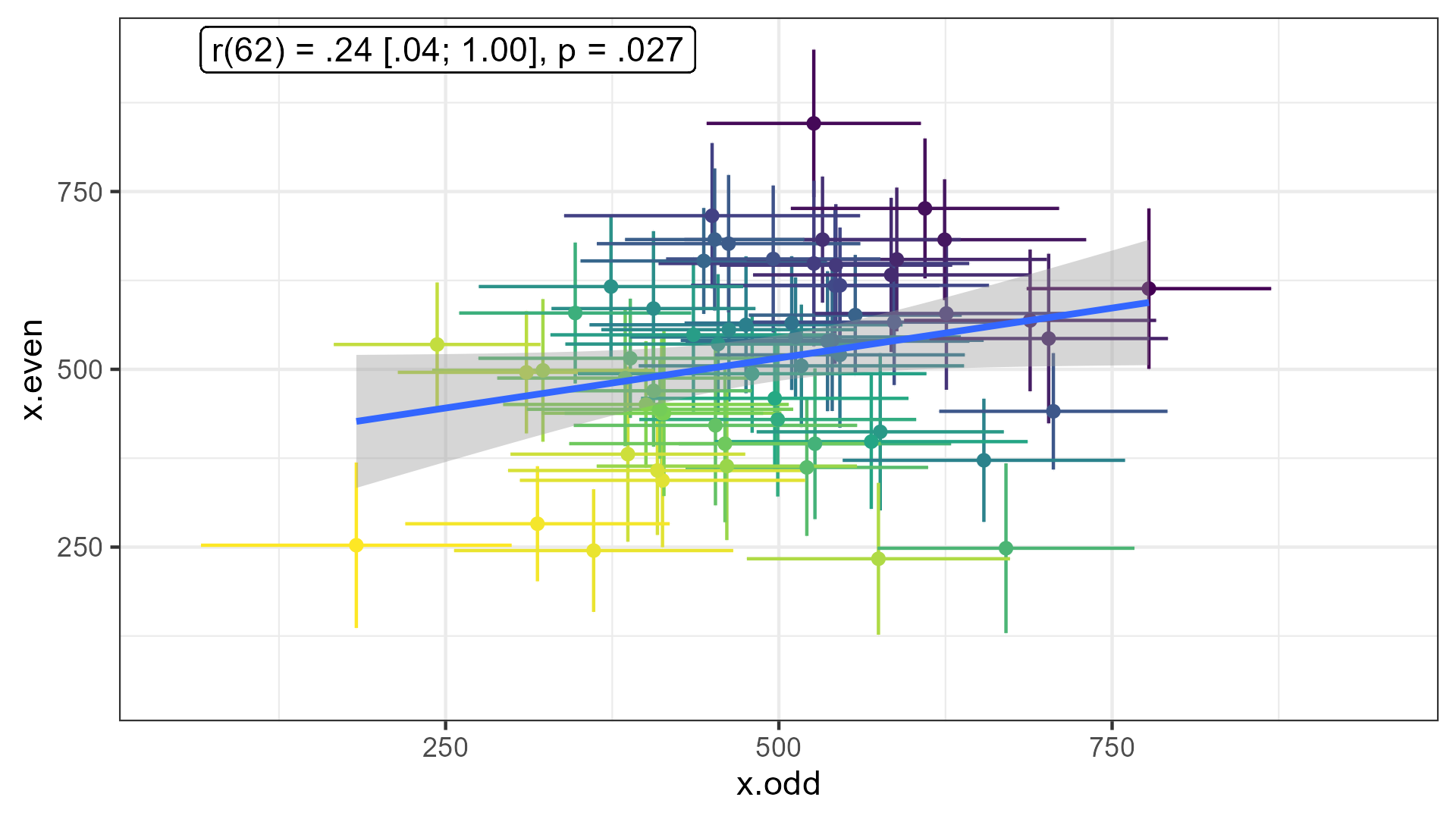
What is Precision? 2
Precision is indicated by errorbars / confidence intervals
Whenever you
summarizeacross a variable, you can calculate the
precision of the aggregation
Trial-Level Precision
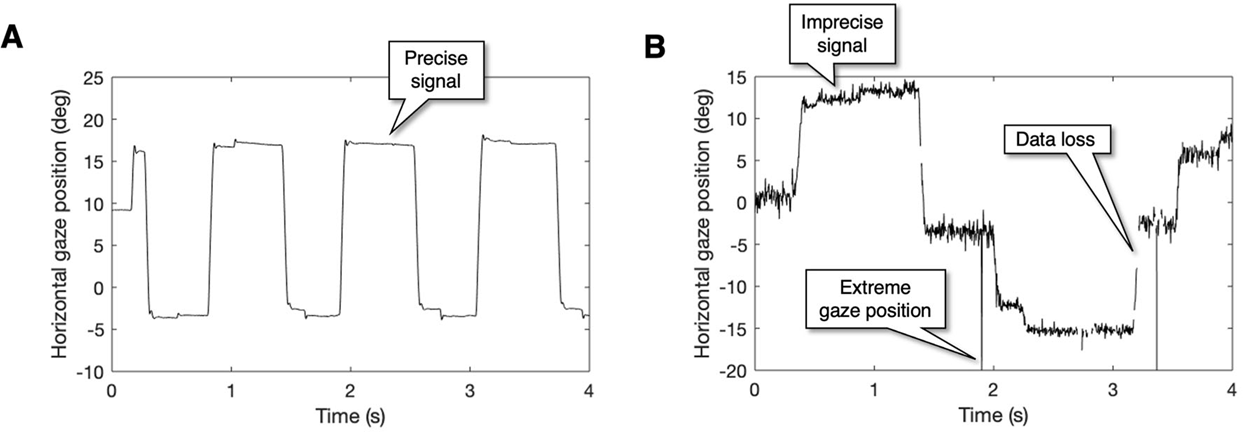
Holmqvist et al. (2023, retracted)
Only relevant for time series data (i.e., several “measurements” per trial)
Note: Calculating standard deviation / error is not trivial here because of auto-correlation
What is Precision? 3
Precision is indicated by errorbars / confidence intervals
Whenever you
summarizeacross a variable, you can calculate the
precision of the aggregationPrecision exists on different levels: group, subject, trial (and more)
Related Concepts
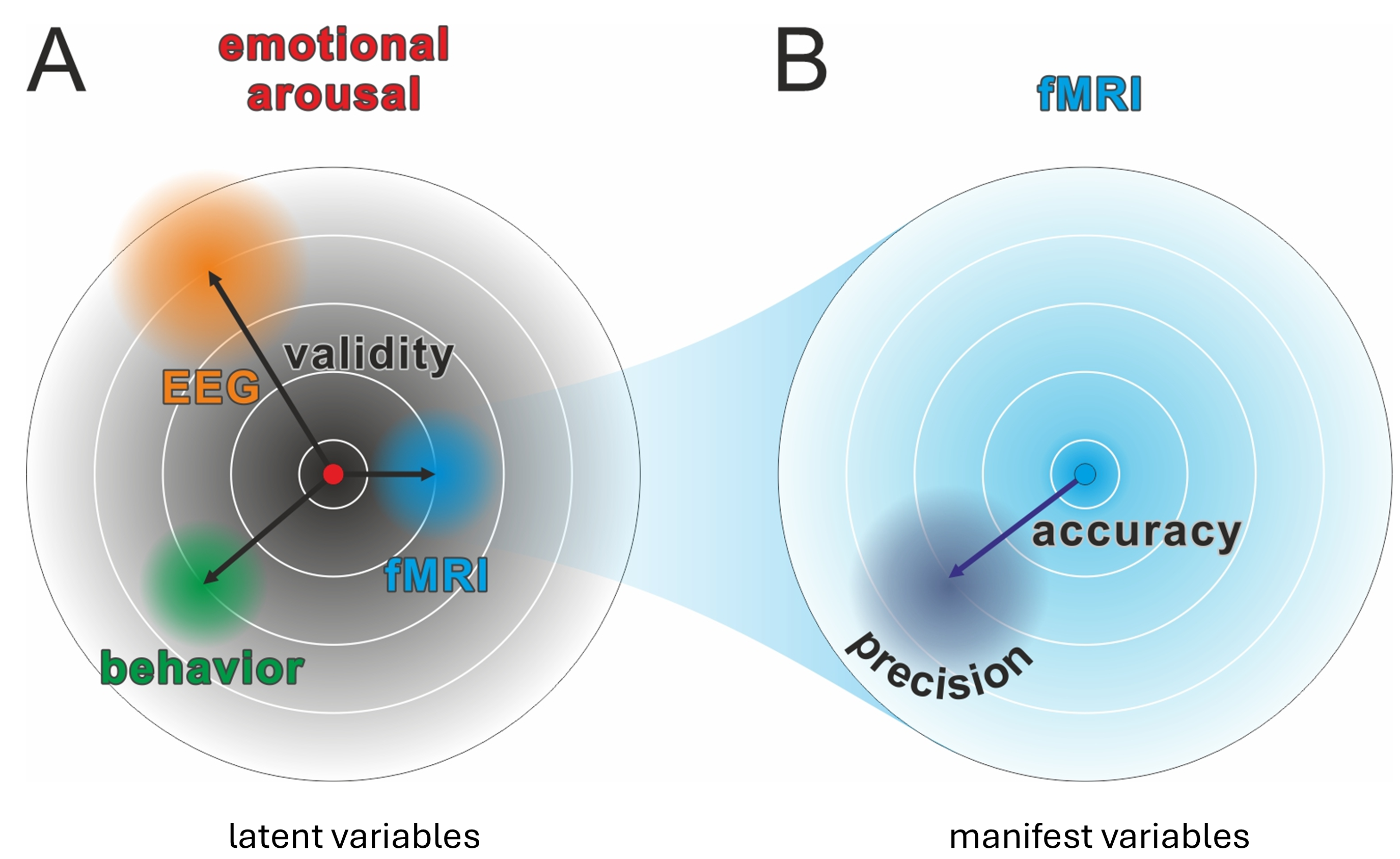
cf. Nebe, Reutter, et al. (2023); Fig. 1
Precision vs. Accuracy
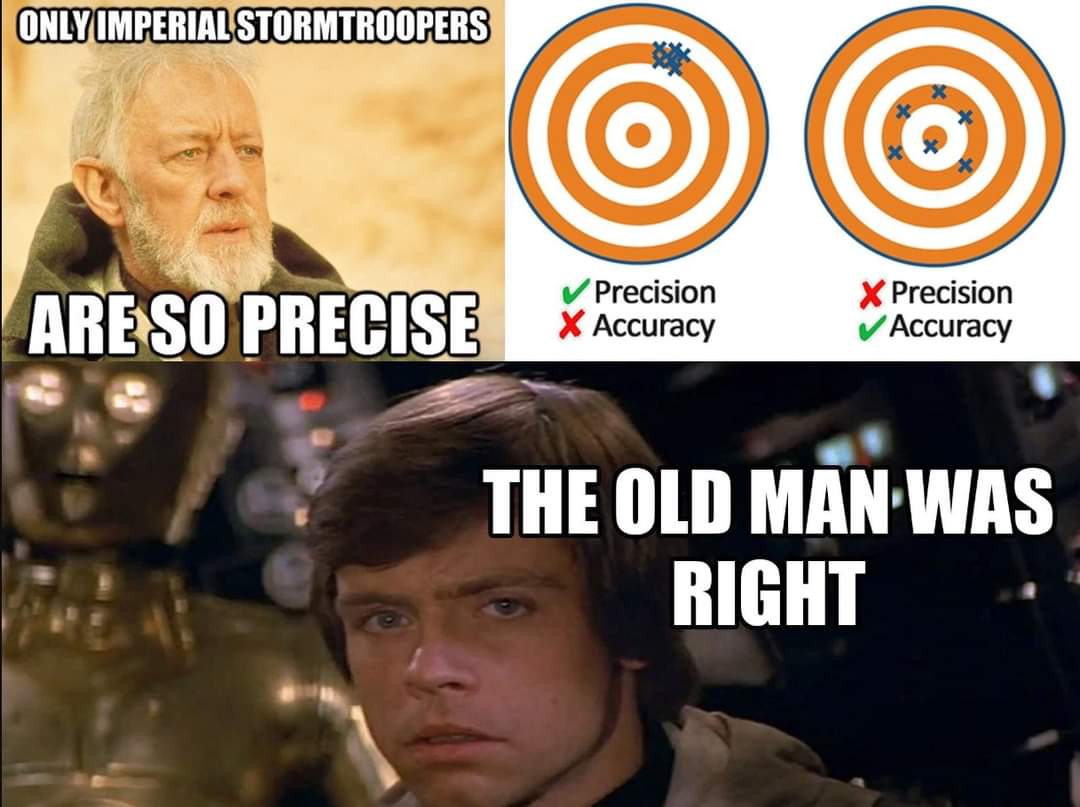
https://www.reddit.com/r/OTMemes/comments/6am425/obiwan_was_right_all_along/
What is Reliability?
Not this!

http://highered.blogspot.com/2012/06/bad-reliability-part-two.html
Where is Reliability highest?
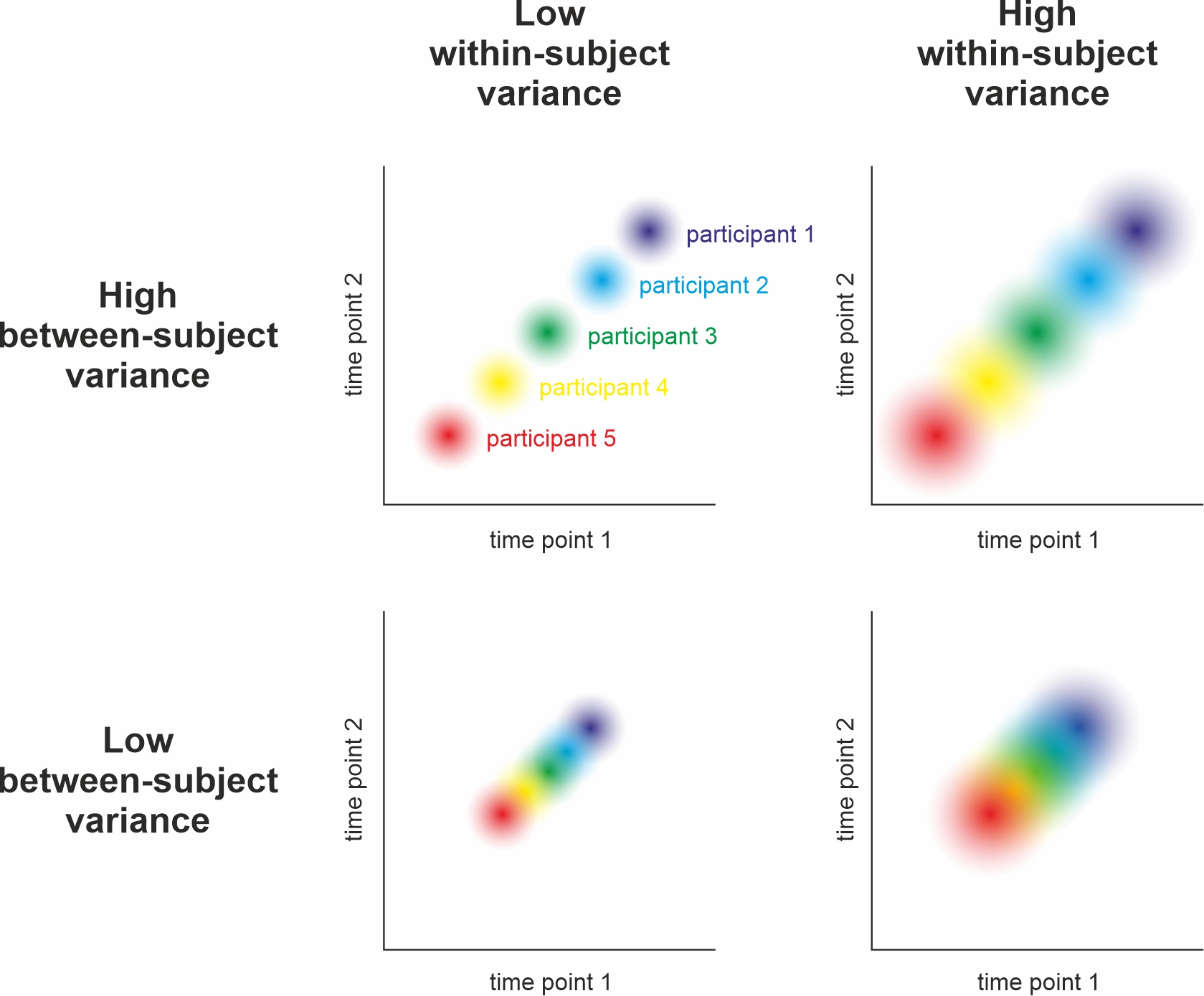
cf. Nebe, Reutter, et al. (2023); Fig. 2
What is Reliability? 2
(Intraclass) Correlation
→ explained variance:
\(R^2 = between / (between + within)\)
Reliability tells you if (to what extent) you can distinguish between low and high trait individuals.
⇒ Reliability =
low subject-level variability (high precision) +
high group-level variability (low precision!)

Reliability Paradox
Paradigms that produce robust results often show low reliability (Hedge et al., 2018)
Why do statistical significance and reliability not go hand in hand?
Reliability Paradox
Paradigms that produce robust results often show low reliability (Hedge et al., 2018)
Why do statistical significance and reliability not go hand in hand?
Statistical power is enhanced by high group-level precision,
reliability by high group-level variability (cf. previous slide)More subjects only increase group-level precision (high power), leaving subject-level precision constant
→ sample size has no effect on the magnitude of reliability
Reliability vs. Group-Level Precision
Group-level precision ⇔ homogenous sample / responses
Reliability ⇔ heterogenous sample / responses
→ Choosing your paradigm and sample, you can optimize for group-level significance OR reliability
Basic research favors different things than (clinical) application (or individual differences research)
⇒ Most of the time group-level precision gets optimized at the cost of reliability
Trial-Level Precision to the Rescue!
Improving trial-level precision of the measurement benefits both subject- and group-level precision
⇒ Nested hierarchy of precision
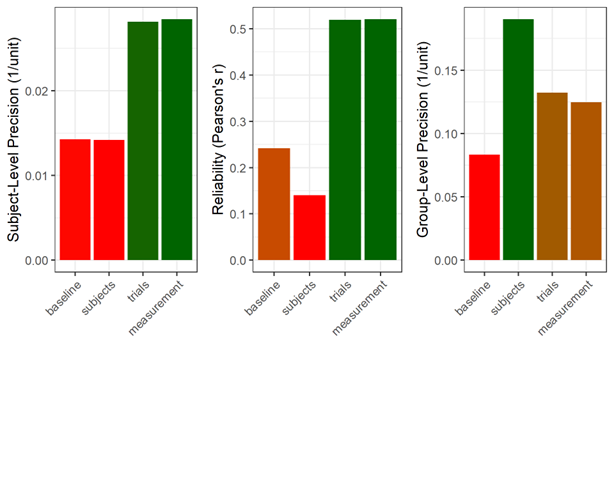
cf. Nebe, Reutter, et al. (2023); Fig. 7
Trial-Level Precision to the Rescue!
Improving trial-level precision of the measurement benefits both subject- and group-level precision
⇒ Nested hierarchy of precision
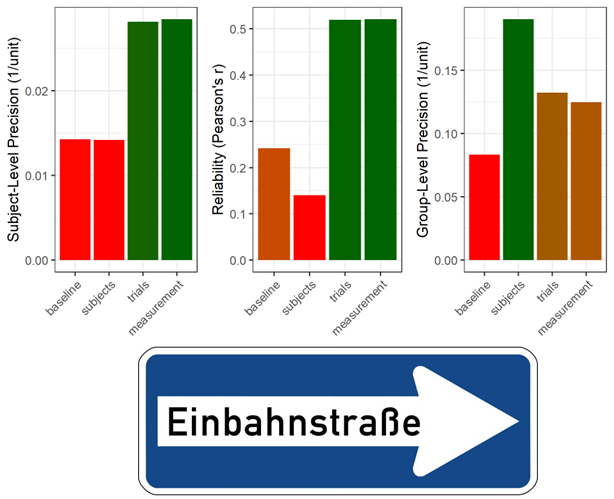
cf. Nebe, Reutter, et al. (2023); Fig. 7
Summary: What is Precision?
Precision is indicated by errorbars / confidence intervals
Whenever you
summarizeacross a variable, you can calculate the
precision of the aggregationPrecision exists on different levels: group, subject, trial (and more)
Closely linked to statistical power and reliability
How Can We Enhance Precision?
Shield the measurement from random noise → precise equipment / paradigm
⇒ trial-level precisionIdentify the aggregation level of interest:
- sample differences → optimize group-level precision:
many subjects that respond homogenously - correlational hypotheses / application → optimize subject-level precision:
systematic differences between individuals but little variability within subjects across many trials (mind “sequence effects”; cf. Nebe, Reutter, et al., 2023)
- sample differences → optimize group-level precision:
⇒ “two disciplines of scientific psychology” (Cronbach, 1957)
Group- vs. Subject-Level Precision
Group-level Precision
Group differences (t-tests, ANOVA)
Many subjects (independent observations)
Homogenous sample (e.g., psychology students?)
Subject-level Precision
Correlations (e.g., Reliability)
Many trials (careful: sequence effects!)
Heterogenous/diverse sample
Low variability within subjects across trials (i.e., SDwithin)
Take Home Message
We are in a replication crisis
Increasing the number of subjects is not the only way to get out
Sample size benefits basic research on groups only
⇒ Increase precision on the aggregate level of interest!

Precision in R!
The Standard Error (SE)
Calculates the (lack of) precision of a mean based on the
standard deviation (\(SD\)) of the individual observations and their number (\(n\))
\[SE = \frac{SD}{\sqrt{n}}\]
The Standard Error (SE) in R
No base R function available 💩
Use
confintr::se_mean(not part of the tidyverse)Use a custom function
The Standard Error (SE) in R 2
Whenever you use mean, also calculate the SE:
library(tidyverse)
iris %>% #helpful data set for illustration
summarize( #aggregation => precision
across(.cols = starts_with("Sepal"), #everything(), #output too wide
.fns = list(mean = mean, se = confintr::se_mean)),
.by = Species) Species Sepal.Length_mean Sepal.Length_se Sepal.Width_mean Sepal.Width_se
1 setosa 5.006 0.04984957 3.428 0.05360780
2 versicolor 5.936 0.07299762 2.770 0.04437778
3 virginica 6.588 0.08992695 2.974 0.04560791
→ subject-level (species-level) precision
Standard Error Pitfalls in R
What is the group-level precision of Sepal.Length?
Note: Treat Species as subjects and rows within Species as trials.
data <-
iris %>%
rename(subject = Species, measure = Sepal.Length) %>%
mutate(trial = 1:n(), .by = subject) %>%
select(subject, trial, measure) %>% arrange(trial, subject) %>% tibble() #neater output
print(data)# A tibble: 150 × 3
subject trial measure
<fct> <int> <dbl>
1 setosa 1 5.1
2 versicolor 1 7
3 virginica 1 6.3
4 setosa 2 4.9
5 versicolor 2 6.4
6 virginica 2 5.8
7 setosa 3 4.7
8 versicolor 3 6.9
9 virginica 3 7.1
10 setosa 4 4.6
# ℹ 140 more rowsStandard Error Pitfalls in R
What is the group-level precision of Sepal.Length?
# A tibble: 1 × 2
m se
<dbl> <dbl>
1 5.84 0.0676Standard Error Pitfalls in R 2
What is the group-level precision of Sepal.Length?
data %>%
summarize(measure.subject = mean(measure), .by = subject) %>% #subject-level averages
summarize(m = mean(measure.subject),
se = confintr::se_mean(measure.subject),
n = n())# A tibble: 1 × 3
m se n
<dbl> <dbl> <int>
1 5.84 0.459 3⇒ When using trial-level data to calculate group-level precision, summarize twice!
⇒ Every summarize brings you up exactly one level - don’t try to skip!
trial-level → subject-level → group-level
Summary: Precision in R
data %>%
summarize(.by = subject, #trial- to subject-level
measure.subject = mean(measure), #subject-level averages
se.subject = confintr::se_mean(measure)) %>% #subject-level precision
summarize(m = mean(measure.subject), #group-level mean ("grand average")
se = confintr::se_mean(measure.subject), #group-level precision
se.subject = mean(se.subject), #average subject-level precision (note: pooling should be used)
n = n())# A tibble: 1 × 4
m se se.subject n
<dbl> <dbl> <dbl> <int>
1 5.84 0.459 0.0709 3Thanks!
Learning objectives:
Learn about the core concept of precision and how it relates to similar constructs (e.g., validity, reliability, statistical power)
Recognize your aggregate level of interest for research questions and how you can improve its precision
(Understand the reliability paradox and its relation to precision)
Calculate precision in
R(on different aggregation levels)
Next:
Confidence Intervals